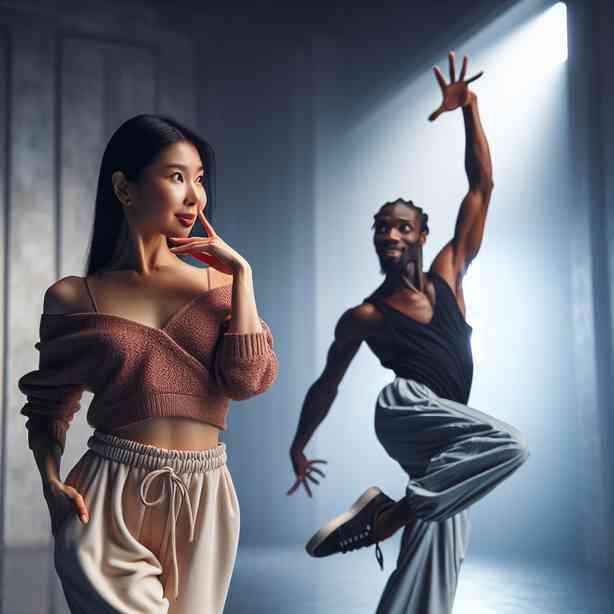
When you watch someone else perform the choreography you created, a range of emotions unfolds. There’s a peculiar mixture of pride, anxiety, and admiration that can evoke a deep sense of connection between the choreographer and the dancer. This experience can stir thoughts about the creative process, the intention behind each movement, as well as the ultimate realization of an artistic vision.
As you sit back and observe the dancer interpret your choreography, you may initially feel an overwhelming sense of pride. This pride stems from the fact that your ideas and concepts about movement are being brought to life through someone else’s body. The dancer takes your vision and imbues it with their own energy and interpretation, which can be both exhilarating and humbling. The elegance and skill with which they execute the moves might bring a smile to your face, providing a moment of validation for all the hours spent crafting the choreography.
However, the experience isn’t solely about pride. As you watch, a hint of anxiety may creep in. You might compare their performance to your original execution or imagine how you would execute the movements differently. Questions may arise: Is my choreography being represented accurately? Is the emotional essence of the piece maintained in their performance? These reflections are natural and signify the depth of your connection to the piece and its execution. Such self-reflection can lead to personal growth, encouraging you to develop your voice further as a choreographer.
In observing a dancer, you’re also granted the opportunity to see your work from a different perspective. The dancer’s interpretation brings new insights into your choreography that perhaps you hadn’t noticed before. Their unique style, body language, and emotional expression can unveil layers of your creation that you might have overlooked. This acknowledgment can inspire new ideas, prompting you to consider how your choreography can evolve in the future.
Moreover, watching someone else perform your choreography cultivates a sense of community. It highlights the collaborative nature of dance, where individual expressions are brought together to create something larger than oneself. In the end, it isn’t just about one person’s interpretation but how various dancers can express a singular idea through their individual lens. This shared journey can be highly enriching, allowing for discussion and feedback that can enhance the performance and the choreography itself.
As the performance continues, you may also find yourself lending emotional support to the dancer. You know how challenging it can be to execute choreography, especially when considering the nuances of timing, expression, and synchronization with the music. Your understanding of the hard work that goes into preparing for the performance compels you to root for the dancer, to hope they succeed in captivating the audience, just as you envisioned when you first created the piece.
In these moments, the dancer becomes your mirror reflecting not only your work but also your dreams and aspirations as a choreographer. You may find yourself longing to communicate the intrinsic messages and movements more effectively. This can lead to a form of catharsis, leading you to nourish your creative instincts further and delve deeper into what drives your choreographic choices.
It’s natural, too, to have mixed feelings about the choreography’s reception. You might ponder how the audience perceives the piece and take note of their reactions. The initial applause can fill you with joy, while constructive criticism may push you to rethink aspects of your creation. Interactions with the audience will also give you insights into how others interpret your work, which can be both enlightening and challenging.
Through this nuanced experience, you also learn important lessons about letting go. While it may be challenging to relinquish control over how your choreography is executed, embracing this process allows for the dancer to truly shine. It fosters a collaborative space where creativity can flourish and be reinterpreted. Understanding that your creation can take on a life of its own can be both freeing and necessary for personal growth as an artist.
In conclusion, watching someone else perform your choreography is an intricate experience woven with a myriad of emotions: pride, anxiety, joy, and even a touch of vulnerability. Each performance transforms your creation, renewing it in the eyes of an audience while reaffirming your commitment to the art form. Ultimately, this shared experience reaffirms the importance of community in dance, where the interplay between choreographer and dancer generates endless possibilities and deeper insights into the art of movement. Embrace every performance as not just an end goal but a step in the ongoing journey of creativity and connection within the beautiful world of dance.


